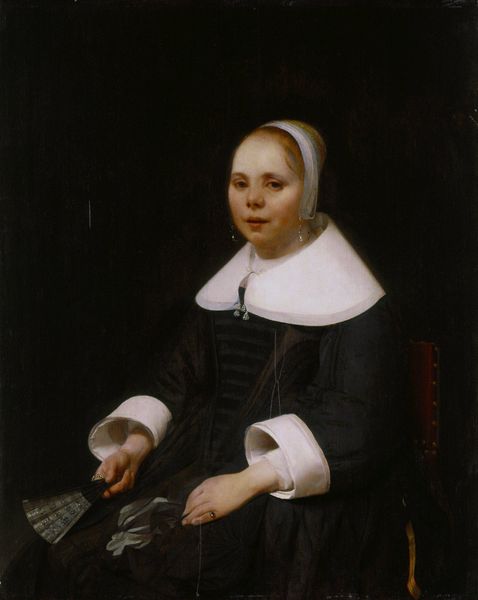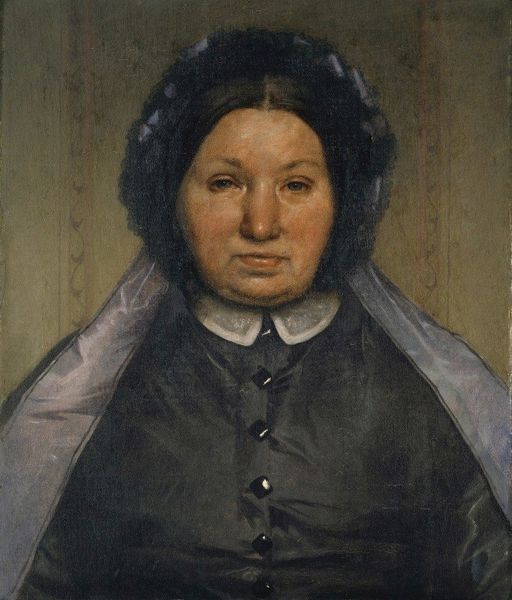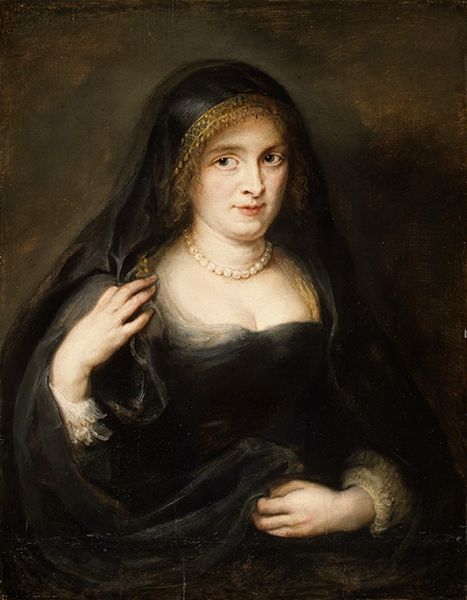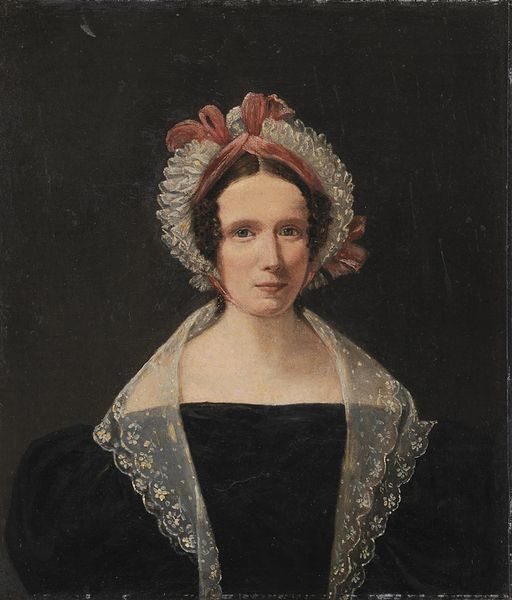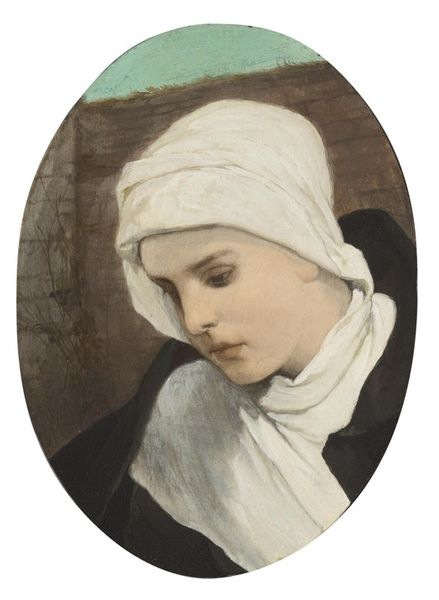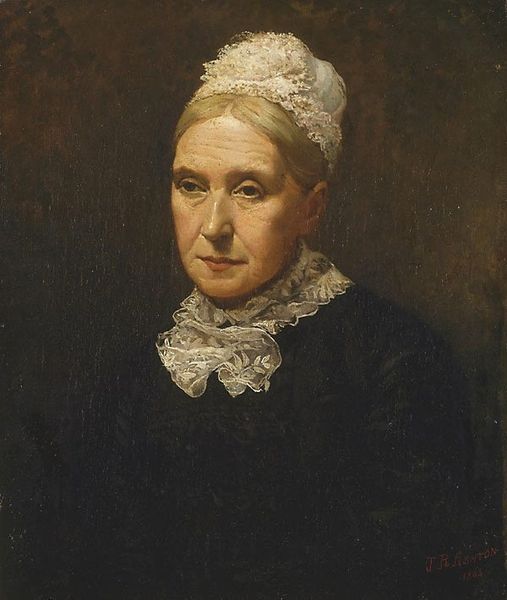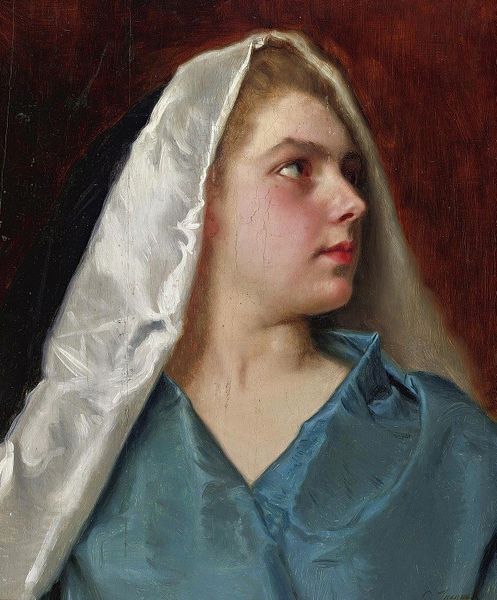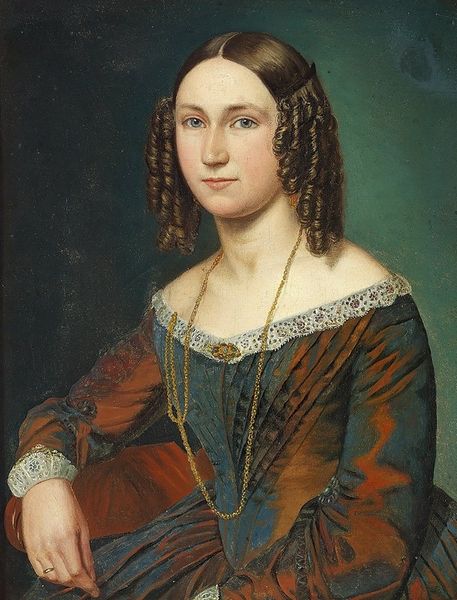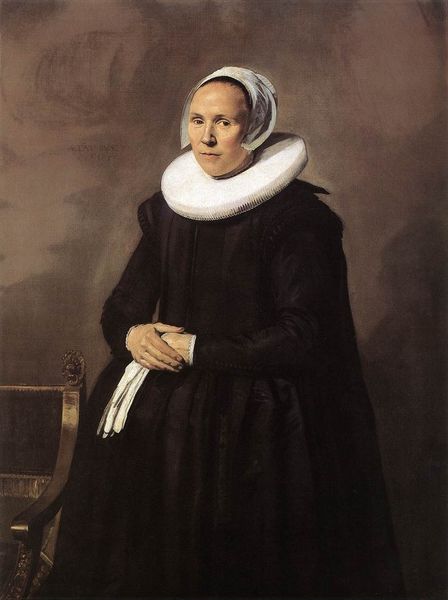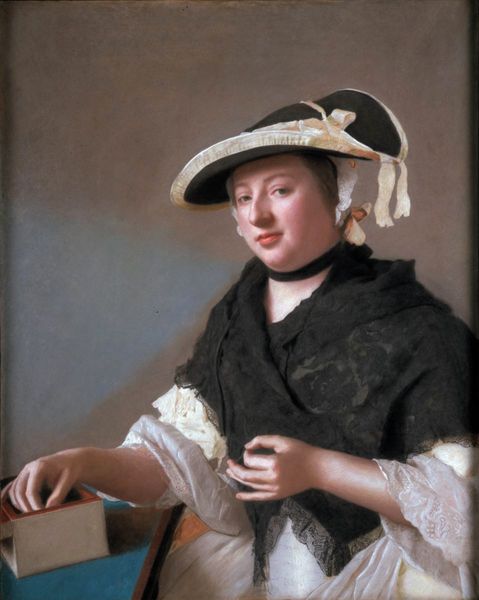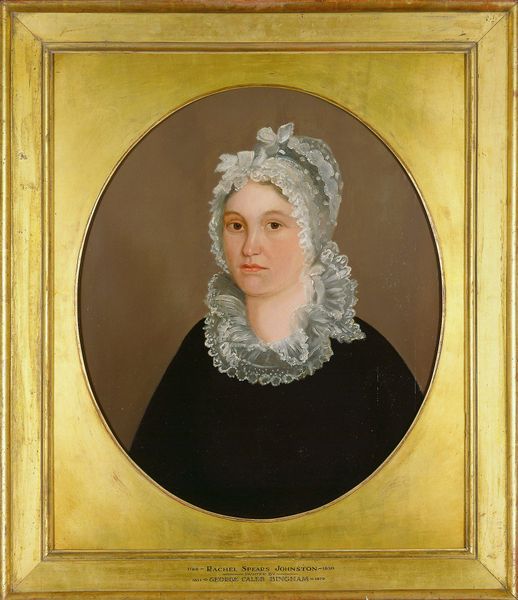
painting, oil-paint
#
portrait
#
painting
#
oil-paint
#
11_renaissance
#
northern-renaissance
Dimensions: 45 x 34 cm
Copyright: Public domain
Curator: We’re looking at a remarkable portrait. “Portrait of a woman from southern Germany,” painted in 1523 by Hans Holbein the Younger. A masterful example of Northern Renaissance portraiture rendered in oil. Editor: Immediately, what strikes me is the subject’s serene and rather somber expression. There’s a weight to her gaze. The color palette also enhances the feeling, the contrast between the dark clothing and the bright, cool tone of her skin is stark. Curator: Indeed, Holbein was a master of capturing likeness and status. Consider how portraits functioned in the 16th century. For the rising merchant class, it was an opportunity to visibly assert wealth and position within the social hierarchy. These portraits broadcasted a certain respectability and civic virtue. Editor: Absolutely, we need to unpack this image further. Her headdress, the details of her dress, even the subtle gold ring on her finger – all contribute to the performance of a very specific social identity. Let's also think about the male gaze embedded within these commissions; a woman of this period had little or no agency. She’s an object. Curator: To expand on that point, what the patron-- likely her husband or father--aimed for, was to illustrate not merely physical resemblance but to project their familial lineage, their holdings, and even their political allegiances. It’s strategic visual messaging. The portraits are visual commodities that embody ideals. Editor: Right, and those ideals are invariably constructed through a male, classist lens. I see an underlying critique waiting to be expressed regarding limited rights of women within society at the time this work was made. What agency did this woman really have? Curator: An important point that reminds us that interpreting these portraits involves critically examining societal forces. What stories do we tell, what is visible and perhaps even more vital, what do we obscure from the narrative? Editor: Looking closely, you sense the tension between a subject seeking individuality, or possibly feeling repressed by an expectation. The ring is telling -- It binds and symbolizes marital fidelity and social ties. Curator: Thinking more broadly about these portraits, they provide tangible access into a long lost historical epoch, reminding us about class and societal differences and the ways art acted as a historical medium. Editor: Holbein’s subject exists across history-- a life lived but remembered within the brushstrokes on canvas. Powerful to consider, even now.
Comments
No comments
Be the first to comment and join the conversation on the ultimate creative platform.

